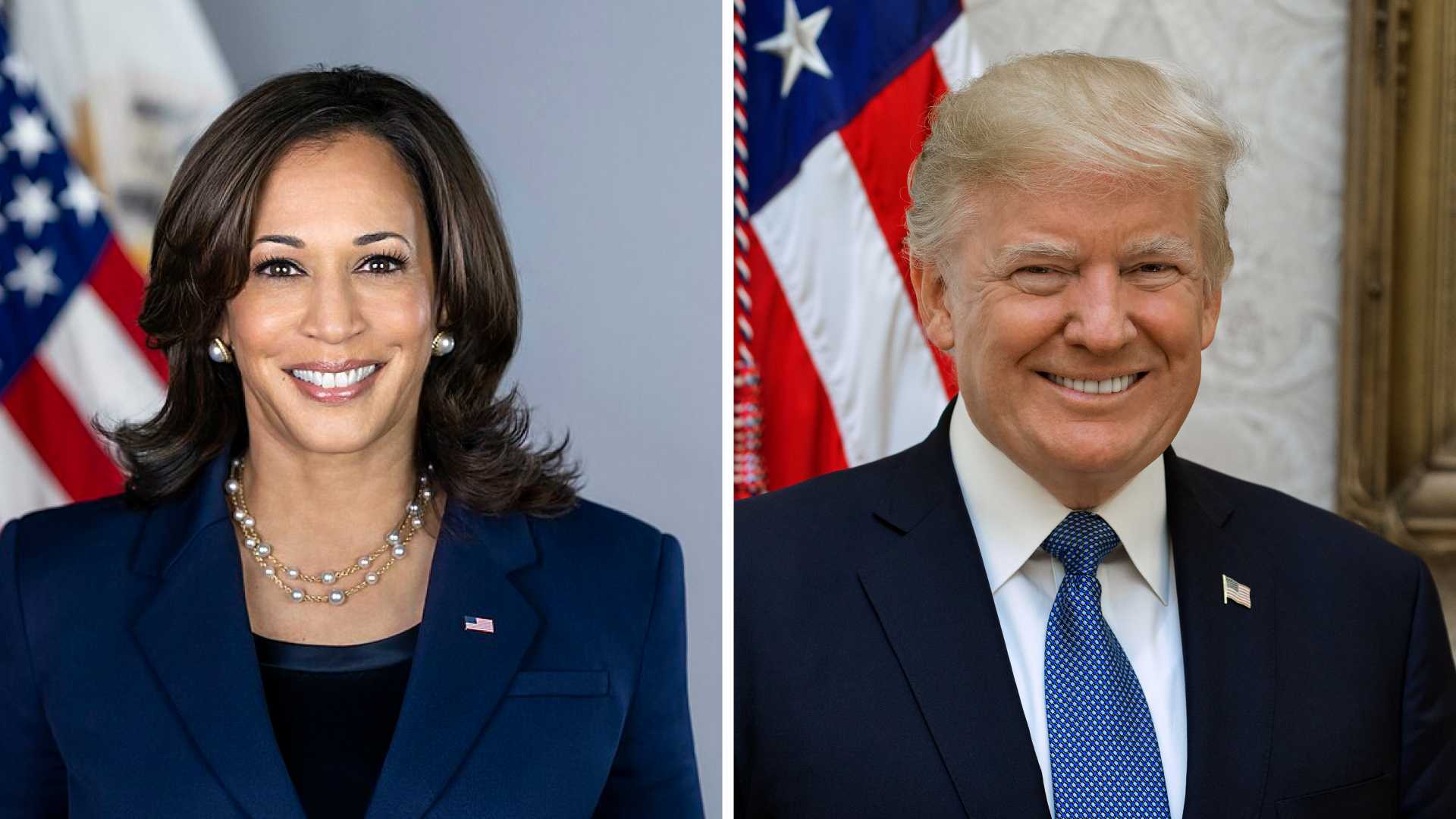News
How did the debate between Kamala Harris and Donald Trump go? Things to know
Filippo Iachello
6 min

On 10 September, Kamala Harris and Donald Trump held the long-awaited official debate for the November presidential election. Who came out on top?
On 5 November, US voters will go to the polls to elect the next president. Initially planned as a rematch of the 2020 election, this election was turned upside down in July when President Joe Biden decided to end his campaign and endorsed Vice President Kamala Harris. The big question now is: will the result mean a second term for Donald Trump or the first woman president of the United States?
Harris vs Trump: the debate and the effect on the campaign
10 September marked a very important moment in the presidential election race for both candidates, especially for Kamala Harris, who took the opportunity to introduce herself to Americans as the new leader of the Democratic Party after the resignation of Joe Biden. Harris addressed all Americans still undecided about voting, taking the stage determined to represent the ‘face of change’ and show a ‘new way forward’ for all Americans. On the other hand, Trump maintained his style, emphasising the strong positions that distinguish him and criticising his rival’s lack of pragmatism.
Harris vs Trump: a heated confrontation on crucial issues
The debate, held in Philadelphia and moderated by David Muir, saw the two candidates address topics of great relevance to voters: the economy, inflation, immigration and abortion. Harris tried to position herself as the middle-class candidate, accusing Trump of being the ‘champion of the billionaires’. At the same time, Trump portrayed Harris as a left-wing extremist who lacks the experience needed to govern.
Kamala Harris had a slower start but managed to carbonise and put Trump on the spot on sensitive issues, such as his popularity among world leaders and judicial troubles. She tried to present herself as a pragmatic and decisive leader, ready to confront international and domestic challenges, such as foreign and social policy issues.
On the other hand, Donald Trump maintained his usual provocative style, trying to discredit his opponent with personal attacks and repeated references to Joe Biden’s tenure, which he described as a failure. Despite his tendency to respond to provocations, Trump has tried to avoid excessively personal attacks while maintaining a harsh tone, especially on immigration, an issue on which he has a lead in the polls.
Taylor Swift’s endorsement and the ‘Spin Room’
One of the most talked about moments of the evening was Taylor Swift‘s endorsement of Harris. The pop star, very influential on social media, endorsed the Democratic candidate with a message to her fans, emphasising her support for Harris. This could have a significant impact, especially among younger voters.
Both camps declared victory in the ‘spin room’ after the debate. Trump’s allies tried to downplay the damage caused by some of his controversial statements, such as when he claimed that Haitian immigrants steal and eat pets in Ohio, a claim immediately denied by the moderator.
Who won the debate?
Regarding immediate reactions, Harris has consolidated his position, standing up to Trump and not giving in to his provocations. Trump appeared confident but was challenged on sensitive points, such as his judicial troubles and popularity among world leaders.
However, both candidates have offered few concrete details about their programmes, leaving many voters questioning the United States’ political future. It is, therefore, too early to assess the impact on the polls, which may better indicate whether there will be any change in electoral preferences in the coming days. Indeed, the seven states with the most significant polling stations – Wisconsin, Pennsylvania, Nevada, North Carolina, Michigan, Georgia and Arizona – will play a key role.
These seven states can, in turn, be divided into three different territorial categories. Pennsylvania, Michigan and Wisconsin, all located north of the Canadian border, represent the most industrial part of the country. North Carolina and Georgia, on the other hand, are located south of Washington, while Nevada and Arizona are the most important in the Western United States.
Who is leading in the polls?
In the months before Biden’s retirement, polls consistently showed him trailing Donald Trump. Although Harris initially struggled to improve those percentages, his campaign began to gain ground. Currently, at national polls, Kamala Harris leads by three percentage points.
This figure, however, matters relatively, as it does not consider the different values of the key or swing states with a higher number of seats, which we listed earlier. If we analyse the question with these preferences in mind, we see that Donald Trump and Kamala Harris are, essentially, on par. For example, in Pens, Harris has 48% of the preferences while Trump has 47%, and the same percentage in Georgia. Conversely, Trump is ahead in Arizona (48%) against 47% for Harris.
National polling averages give a good idea of the candidates’ general popularity but do not necessarily accurately reflect the possible outcome of the election. The outcome will depend on a handful of swing states, such as Pennsylvania, Michigan, and Wisconsin, which historically swing between the two parties.
Who is winning in the swing states?
The polls are very tight in the seven key states, including Pennsylvania, which is crucial for electoral victory. Pennsylvania, in particular, has the most electoral votes among the swing states, making it decisive.
Michigan and Wisconsin, once Democratic strongholds, passed to Trump in 2016, but Biden won them back in 2020. Except for North Carolina, Joe Biden had won favour in six of these seven states. If Harris can maintain these gains, he will be well on his way to winning the election. On the other hand, Trump will have to make up ground in these key states to secure the votes needed to reach the 270 large voters required for victory.
In other words, Kamala Harris and Donald Trump are unlikely to travel to Los Angeles (California) or New York, and if they do, the only purpose of their visits will be to collect money. They will most likely go to Phoenix (Arizona), Milwaukee (Wisconsin), or Atlanta (Georgia).
The role of funding
One element that underlines the importance of swing states compared to those considered ‘normal’ is the amount of money the parties spend on promoting their programmes. In August, for television commercials in Pennsylvania, the two politicians spent about 40 million dollars each, in Georgia almost 20, and in Arizona more than 10.
Finally, we can briefly analyse the issues that will play a vital role in the US elections in November, mainly from an ideological and demographic perspective. For instance, Donald Trump had won a considerable slice of the African-American electorate, which may return to voting Dem after Kamala Harris takes the field. At the same time, however, many South American immigrants who are now citizens of Western states might prefer Trump’s approach to immigration because they have become, over time, strongly conservative on this issue.
Conclusion
The debate between Kamala Harris and Donald Trump gave American citizens a taste of the dynamics that will characterise this presidential race. Harris seems to have a slight lead in the polls, but the road to the White House is far from secure. In the coming days, the political landscape will continue to evolve, and voters in the swing states will have the final say on who will lead the country.




